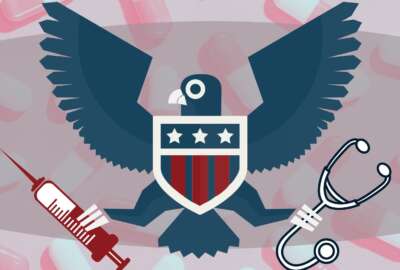FEHB to give new hires ‘first day’ health care coverage under OPM proposal
After OPM finalizes a proposed rule, new federal hires enrolled in FEHB should see “first day” health care coverage, rather than waiting a pay period.
Incoming federal employees will soon get access to the Federal Employees Health Benefits (FEHB) program slightly quicker.
To try to avoid potential gaps in health care benefits for new hires, the Office of Personnel Management proposed a tweak to the FEHB program that deals with enrollment processing.
The wait for new feds to start getting coverage through FEHB can sometimes take several weeks. But after OPM finalizes its proposal, newly eligible enrollees will see “first day” FEHB coverage, once they are on their agency’s payroll.
“Permitting health insurance coverage to become effective at the start of employment could reduce the risk of new employees enduring coverage gaps and potentially costly medical bills associated with such gaps,” OPM said in a proposed rule, published to the Federal Register on Feb. 1. “[It can] also act as an attractive recruitment tool in building a well-qualified, robust workforce.”
Gaps in health care insurance for newly hired feds can stem from processing times at OPM or an employing agency. Currently, new hires have 60 days after their start date to enroll in the FEHB program. But even if they enroll within their first few weeks — or even days — on the job, they typically have to wait until the start of the next pay period to qualify.
Even if short-lived, gaps in health care coverage can have negative, if unintended, consequences. If a new fed has immediate or existing health care needs, they may face financial burdens between jobs if they experience a break in insurance. The gaps can also create barriers to feds who are looking to access mental health services, vaccines or contraceptives.
OPM did not immediately respond to Federal News Network’s request for comment on why the agency decided to change the policy. But in the proposed rule, OPM said the change would help the government align its FEHB policies with promising practices in both the private sector and the Federal Employees’ Group Life Insurance (FEGLI) program.
“Health insurance is an influential factor on employee recruitment, retention and satisfaction, and is a benefit offering critical coverage, in sometimes life or death circumstances,” OPM said.
The mechanics of the proposed rule are somewhat complicated. But, as an example, say a new employee requests to enroll in FEHB during their first two weeks on the job. As the rules stand right now, if OPM didn’t receive the FEHB enrollment request by the end of the same pay period, then the new employee would have to wait until the following pay period for their benefits to kick in. That can create a gap if the employee didn’t still have insurance from, for instance, a previous employer.
Under the proposed rule, OPM would extend health care benefits to new hires on their first day in “pay status,” rather than having them wait until the following pay period. If OPM hasn’t yet processed the enrollment, the employee will receive coverage retroactively.
The proposed rule could have very broad impacts, since an estimated 230,000 new federal employees enroll in FEHB each year. Employees who are newly eligible for FEHB are in most cases new hires in the federal workforce. But a smaller portion of new enrollees also include those who switch positions from a federal job that doesn’t have access to FEHB, to one that does have access.
Kevin Moss, editor at Consumers’ Checkbook Guide to Health Plans for Federal Employees, said he sees OPM’s proposed change as a positive one, as it aligns with other efforts OPM has already made to try to increase access and create equity in the FEHB program.
“OPM should be applauded for keeping tabs on benefit best practices in the private sector and using those learnings to improve FEHB,” Moss said in an email to Federal News Network. “In recent years we’ve seen OPM push for enhanced fertility benefits, improved access to mental health treatment and expanded maternal health coverage. This proposed rule would eliminate the possibility of having a gap in health insurance coverage when joining the federal workforce, easing the transition to federal service.”
For now, OPM’s proposed rule only applies to FEHB, and does not include either the Federal Employees Dental and Vision Insurance Program (FEDVIP) or the Federal Long Term Care Insurance Program (FLTCIP). But OPM said it’s opening to hearing feedback on whether the agency should additionally change the policy in the same way for dental and vision benefits.
OPM is accepting public comments on the proposed rule for the next two months, until April 1. Given the potentially complicated nature of implementing the changes, OPM said agencies will have 18 months, once OPM finalizes the regulations, to update their policies.
Copyright © 2025 Federal News Network. All rights reserved. This website is not intended for users located within the European Economic Area.
Drew Friedman is a workforce, pay and benefits reporter for Federal News Network.
Follow @dfriedmanWFED






